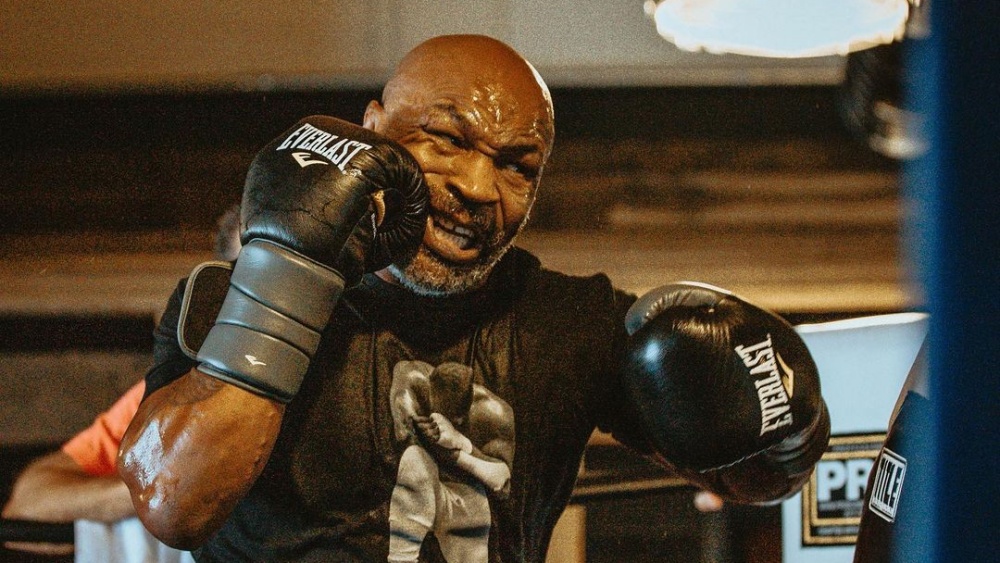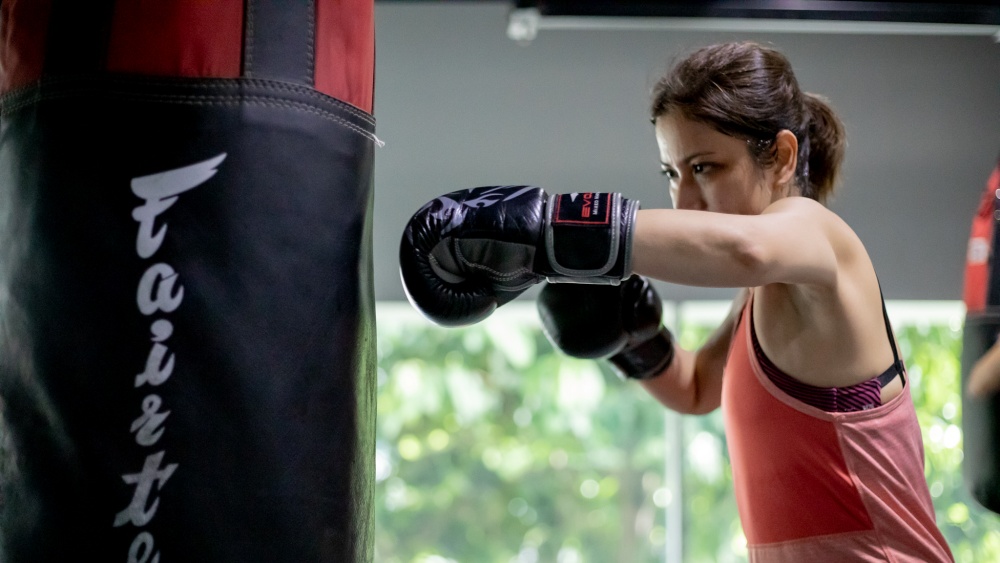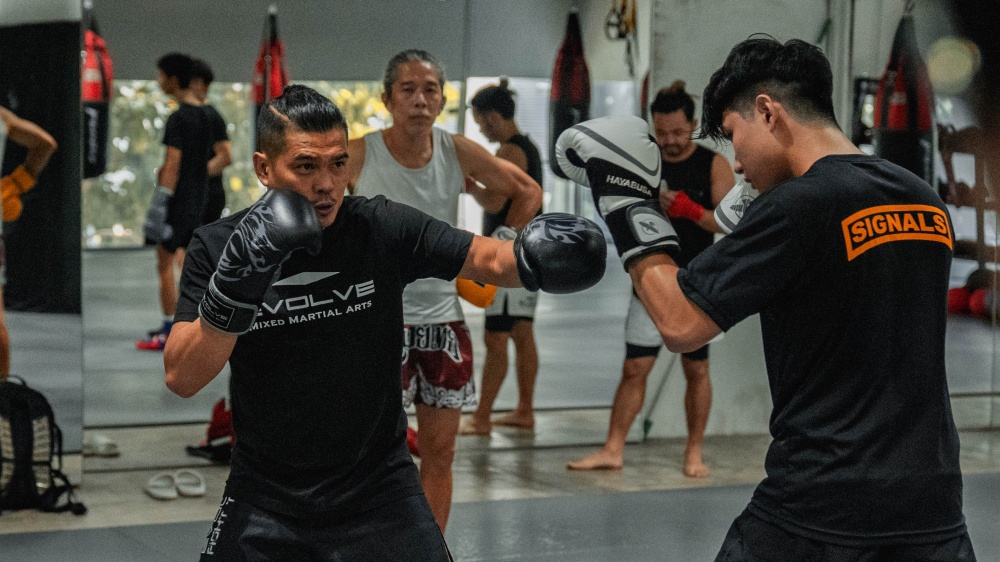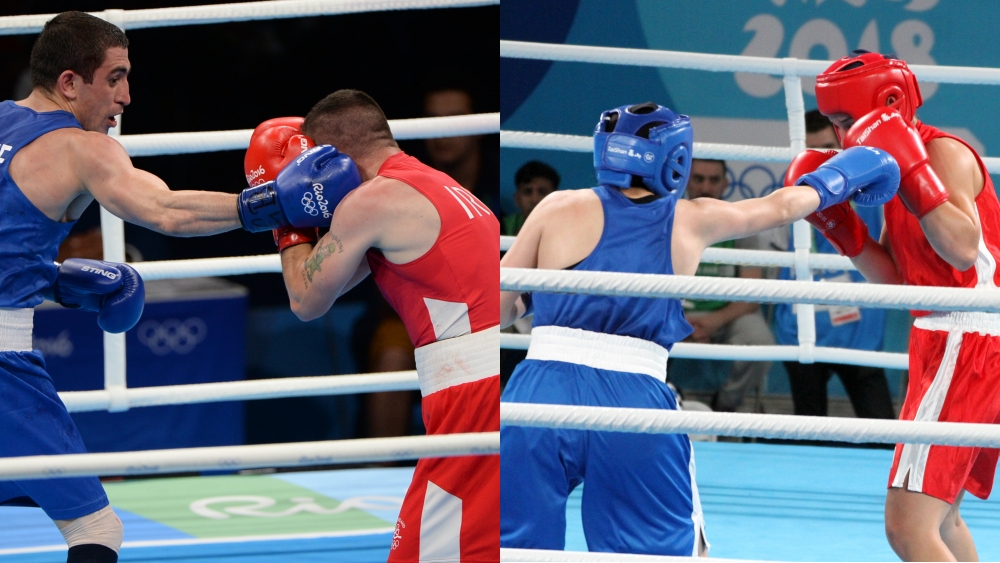The hook is one of the most powerful weapons used in boxing, and it covers more ground than other powerful punches like uppercuts. There are two popular ways of throwing the hook these days which are the American (vertical) and European (horizontal) hooks.
A hook is thrown by bending your arm at or close to a 90-degree angle, and swinging it in a horizontal arc into your target, while simultaneously turning your back, hips, and core into the punch. A hook can be used to attack your opponent’s head or body. A cleanly landed hook to an opponent’s head is powerful enough to cause knockouts, and a well-placed hook to the liver often leaves people momentarily paralyzed.
Throwing a hook correctly also involves shifting your weight and pivoting your feet to generate kinetic energy that travels throw the hip, torso, and shoulder into the punch. Generating extra energy with your legs significantly increases the power behind hooks. Pay close attention to highlights of boxers being knocked out by hooks, and you’ll notice how important this little detail is.
The main difference between the European vs American hook is that the latter is thrown with your palms vertical to the ground, while the former is thrown with your palms horizontal. This article will explore some of the differences this tiny variation causes in the technique.
Examining The Differences Between The European Hook Vs The American Hook
The European hook was developed by Englishman Jack Broughton and it’s the original way hooks were thrown in English boxing. The horizontal hook was the standard until the 1950s when gloves were introduced.
The horizontal European hook was originally developed for bare-knuckle fighting to reduce the risk of fighters breaking their hands. The punch was primarily used to target the lower, softer part of the face. The risk of hand injuries was so high, boxers rarely threw any punches if they weren’t any openings in their opponent’s defense.
The American vertical hook started picking up popularity when gloves became the norm and boxing strategies changed. With their hands well-protected with padding, boxers were no longer as selective with their punches, leading to the fast-paced boxing style of the modern era. Boxers now fire off combinations hoping a few of their punches land, instead of carefully picking their shots as was the standard in the early days of bare-knuckle boxing. The thumbs-up hook offers more protection for your hands regardless of if boxing gloves are used.
Pros And Cons Of Vertical Palm Hooks (American)
Some of the benefits of keeping your thumb up while throwing a hook include:
- There’s less risk of breaking your hand when throwing hooks, bare-knuckle or gloved.
- It’s an effective variation for many modern boxers who aren’t particularly great at targeting their shots well.
- It allows boxers to throw high-volume combinations without putting their hands at significant risk.
- It’s an effective way to get around a high guard. If your opponent’s face is well-protected by their hands, go around them to attack the head.
The main weaknesses of the vertical hook compared to the horizontal variety include:
- American-style hooks are not as intrinsically powerful as horizontal hooks.
- Poor punching technique can easily degrade into no more than a slap, limiting the effectiveness of the technique.
- The technique doesn’t cover as much distance as the European hook. Skilled opponents can easily evade it by sliding or swaying back. It also leaves you vulnerable to counters like the pull counter.
Pros And Cons Of Horizontal Palm Hooks (European)
Some of the benefits of the European-style hook include:
- It’s an extremely effective weapon at short and long ranges.
- You can easily lengthen the range of the punch mid-swing, making it more challenging for opponents to evade it by leaning or sliding back.
- It is one of the trickiest punches in boxing for average boxers to deal with, even with proper instruction. Most aspects of the punch are different from vertical hooks, which are more commonly used in modern boxing. Boxers who perfect the horizontal hook pose a serious threat to those unfamiliar with the technique.
Of course, there are some weaknesses associated with the European hook, which is why the American-style hook was developed in the first place. These include:
- The technique puts your hands at risk if not thrown correctly. There’s a higher chance of the two weakest knuckles in the hand making contact with the target, instead of the largest two knuckles. That’s a recipe for broken hands.
- Most of the training methods used in modern boxing like focus mitts and bag work are designed for vertical hooks, making it more challenging to master the technique. Not all boxing trainers are qualified to teach the horizontal hook.
Find What Works Best For You
The European and American hooks are just two of the many hook variations used in boxing. Other include the French, Russian, and shovel hook. Experiment with these different variations until you find some that suit you well. There is no such thing as the best type of hook since they all have their pros and cons.
The vertical hook is the safest option for beginners and intermediate boxers, but it’s more likely to turn into a slap with poor technique. The European hook lands with more power and covers more range, but it puts more stress on your hands, increasing the risk of hand injuries. However, the risk is mitigated to an extent with modern hand wraps and boxing gloves.
When done properly, the horizontal long hook is one of the most powerful legal weapons boxers have at their disposal inside the ring. Examples of the power behind horizontal hooks include Carl Froch putting George Groves away with a massive horizontal hook during their rematch. Ironically, Froch mostly throws vertical punches, but it was the horizontal punch he threw that brought the contest to an end.
Other modern boxers that still use the horizontal hook include Anthony Johnson and Vasyl Lomachenko. Lomachenko typically keeps his palms vertical for straight punches, while keeping them horizontal for hooks. This tactic was popular with early English boxers.
You may also like:
4 Major Boxing Belts And Organizations Explained: WBA, WBC, IBF, WBO & More
Boxing Fundamentals: Understanding The Boxing Punch Number System




















